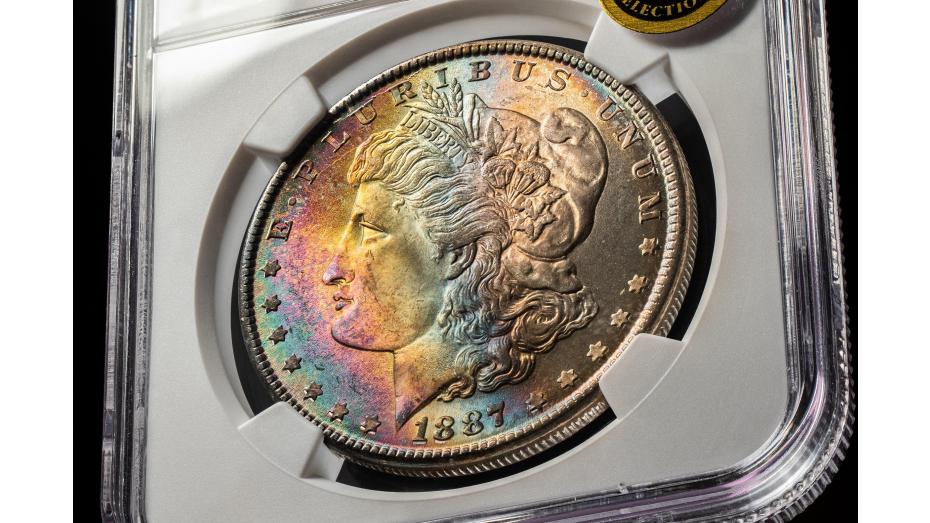Coin Toning: What It Means, and How It Happens
If you spend enough time looking at coins, you may notice that they sometimes begin to exhibit surprising shades of color. They could have become a dark brown as the years passed or acquired a stunning rainbow patina in the time since they were struck. This effect is referred to as toning and is a natural process that occurs when the surface metal of a coin is exposed to certain chemical agents.
Whether or not a coin acquires toning depends on the metal of the coin and the environment it is stored in. Gold, for instance, is the least susceptible to toning, whereas silver and copper are the most susceptible to toning. United States gold coins can still take on subtle shades of color because, in general, these coins are composed of 90% gold and 10% copper. This small amount of copper oxidizes and results in toning, giving the coin shades of orange and amber. Other metals compositions, such as pure gold, nickel, and platinum, tone either very rarely or not at all.
Toning occurs over long periods of time, as the coin’s metal is exposed to oxygen and sulfur. This process takes years to occur, with most natural examples requiring decades to fully develop. Environments where toning is most likely to occur are high in both humidity and sulfur. Typically, bank bags and paper envelopes are a catalyst for toning due to their high sulfur content. However, the simple truth is that toning can and will happen unless the coin is vacuum-sealed.
The colors that a toned coin displays depend on the composition of the coin. For instance, freshly struck copper has a bright red color, but over time oxidizes into a dark brown. On some rare occasions, copper coins may obtain a lustrous rainbow toning. Silver, on the other hand, is much more likely to showcase a stunning rainbow patina that ranges across the entire color spectrum.
Sadly, artificial toning is sometimes utilized by unscrupulous third parties that are hoping to improve a coin’s value through some eye-catching coloring. Due to this fact, collectors should be very cautious when purchasing ungraded toned coins. Reputable coin grading services like NGC and PCGS will refuse to assign a standard grade to such coins, and instead clearly note that these coins have been purposefully altered. To ensure that you are receiving naturally toned coins that have not been altered, it is crucial that they have been inspected and graded by a professional coin grading service such as PCGS or NGC.
Depending on the spectrum of colors exhibited, toning can either add or subtract from the coin’s value. For instance, coins that display dark, yellows, browns, and blacks are seen as tarnished and undesirable to many numismatists. Coins with attractive rainbow hues, however, can command a premium over other examples. These desirable examples of toning are numismatic rarities and make for stunning centerpieces for collections.
If you have more questions about coin toning or coins in general, you can email us at [email protected] and type “Ask a Numismatist” in the subject line.






